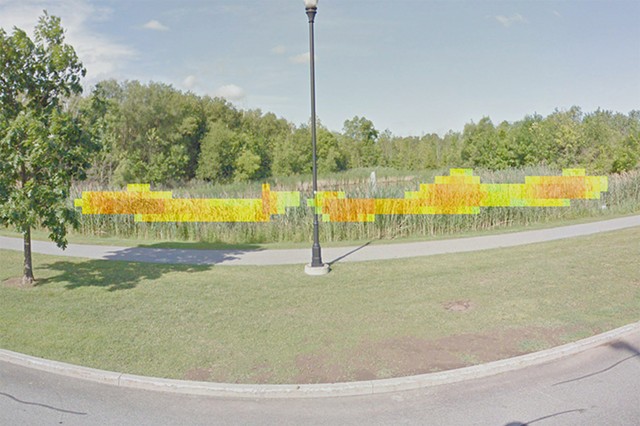Purple loosestrife, with its innocent-looking flares of hot magenta flowers, pops up along roadsides and ditches. Common reed grass, with its tough green spears that can reach 15 feet in height, has made marshes and watersheds its home.
Both are invasive plants that can be found throughout New York, and they’re spreading faster than state environmental officials can eradicate them, two Rochester Institute of Technology scientists say. If left unchecked, these and other invasive plants destroy ecosystems, clog drainage systems, and damage recreation areas and farmland, racking up huge economic losses in the process, Assistant Professor Christopher Kanan and Associate Professor Christy Tyler say.
Environmental workers have historically relied on field reports and volunteers to locate the invasive plants and track where they’re most concentrated. But that’s not efficient, since it’s time-consuming and some plants aren’t easy to identify, Kanan says. They can resemble other plants that aren’t a threat, he says.
Kanan and Tyler are creating maps by developing computer algorithms that analyze high-resolution imagery taken from Google Street View. The mapping will show the locations and growth patterns of five highly invasive plants in the Finger Lakes region and Adirondack Park: common reed, Japanese knotweed, giant hogweed, tree-of-heaven, and purple loosestrife.
Kanan and Tyler’s work is focused currently on roadside mapping, because weeds spread easily along roadways and ditches, says Tyler.
“These plants present a significant problem, particularly in wetlands,” says Tyler. “Once an invasive plant takes hold, it reduces biodiversity and creates one dominant plant.” Some of these plants can kill off native plants, insects, mollusks, and fish, she says.
Some of the invasive plants don’t affect wetlands, but they’re presenting other problems, she says. Just touching hogweed can result in severe rashes and burns. And tree-of-heaven harbors the spotted lanternfly, an invasive insect that feeds on fruit trees such as apples, pears, and peaches. Since they also infest grapes, they pose a huge threat to area vineyards.
Kanan and Tyler have already begun working on the mapping for common reed and Japanese knotweed. Their biggest challenge is training the computer to correctly identify Google images of the plants. Once trained, the program can indicate where the plants are likely to be concentrated so they can be monitored. A big advantage in using the new technology is access, says Kanan. Rough terrain and remote areas that are difficult for people to navigate will be done by computer, he says.
The new technology will also allow state officials to more accurately allocate their resources. The research project is being funded by the New York State Department of Environmental Conservation.















